
On the fresco, three episodes from the Gospel are depicted, opposite is the fresco “The Call of Moses” similarly to the work of Botticelli, a kind of parallel from the Old Testament. The inscription on the frieze, which crowns the mural, reads: TEMPTATIO IESU CHRISTI LATORIS EVANGELICAE LEGIS.
The very temptation of Christ is embodied in three scenes in the upper part of the fresco. To the left, the devil, under the guise of a hermit, persuades a fasting Jesus to turn stones into bread and satisfy hunger. In the center, the devil tries to force Jesus to jump off the top of the Jerusalem temple, depicted in the form of the church of the Holy Spirit di Sassia, to test God’s promise of angelic protection. To the right, the devil on the top of the mountain promises to Jesus the riches of the earth and power over the world if he rejects God and worships him, the devil. Jesus sends the devil away, and the angels come to serve the son of God.
In the foreground, the young man, healed from leprosy, comes to the high priest of the Temple, in order to declare his purification. In the hands of the young man the sacrificial bowl also sprinkled. Two women bring other ingredients for the ritual – sacrificial birds and a bundle of cedarwood.
The High Priest symbolizes Moses, who brought the law, and the young man represents Jesus, who shed his blood and gave his life for humanity, and was healed after the resurrection.
Thus, the possibility is also proclaimed for mankind to be spiritually cleansed and to find salvation.
Some of the figures of the foreground represent portraits of the author’s contemporaries, in particular Cardinal Pietro Riario, as well as Cardinal Giuliano della Rovere, later known as Pope Julius II
 The Healing of the Leper and the Temptation of Christ by Sandro Botticelli
The Healing of the Leper and the Temptation of Christ by Sandro Botticelli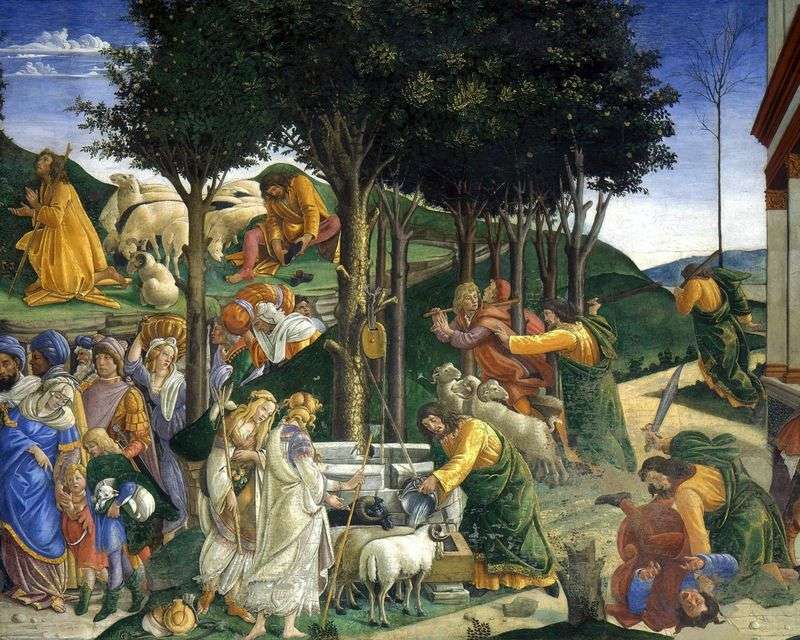 The Calling and Testing of Moses by Sandro Botticelli
The Calling and Testing of Moses by Sandro Botticelli Theophany with the Gospel Tale of the Temptation of Christ
Theophany with the Gospel Tale of the Temptation of Christ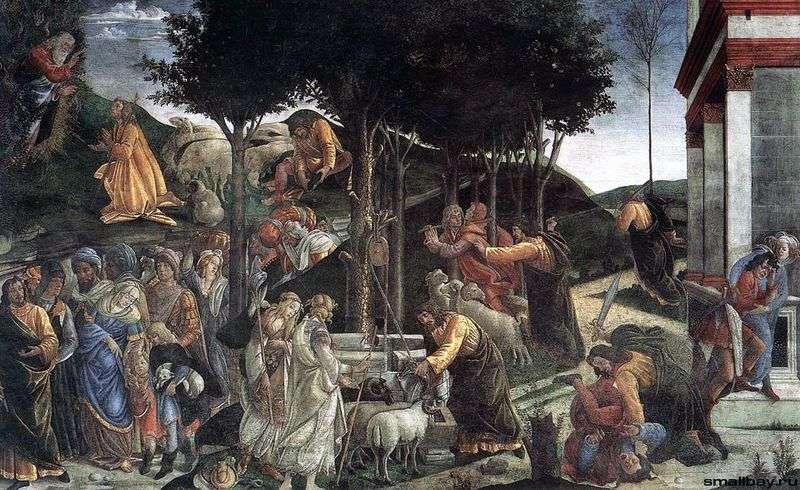 Scenes from the life of Moses (fresco) by Sandro Botticelli
Scenes from the life of Moses (fresco) by Sandro Botticelli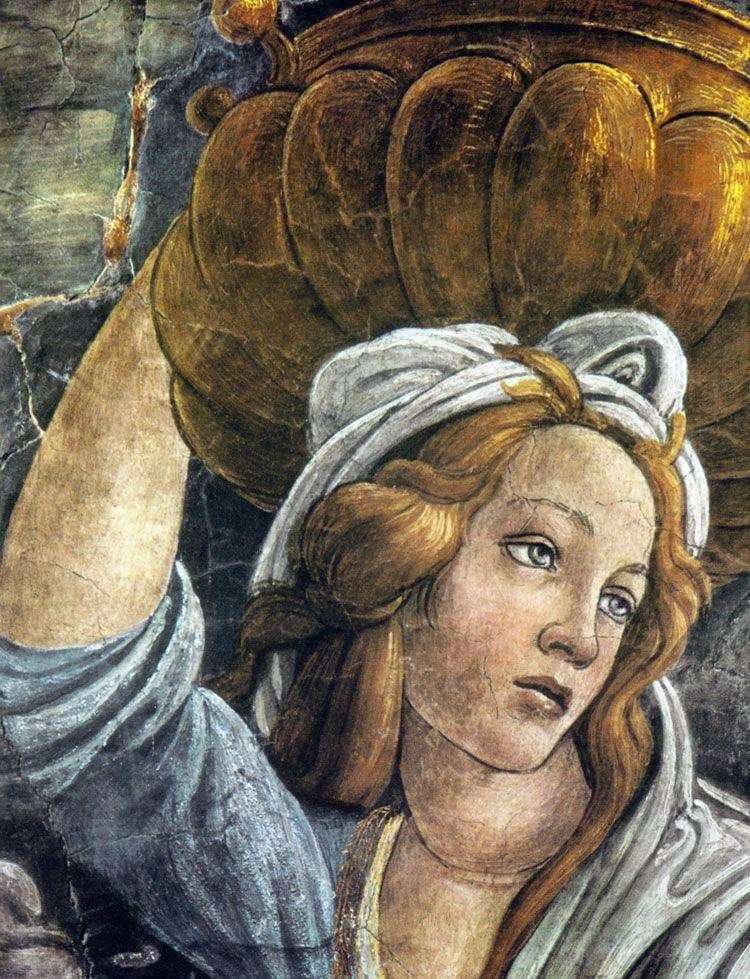 Daughter of Jethro (fragment) by Sandro Botticelli
Daughter of Jethro (fragment) by Sandro Botticelli Punishment of Korea Dafan and Abiron by Sandro Botticelli
Punishment of Korea Dafan and Abiron by Sandro Botticelli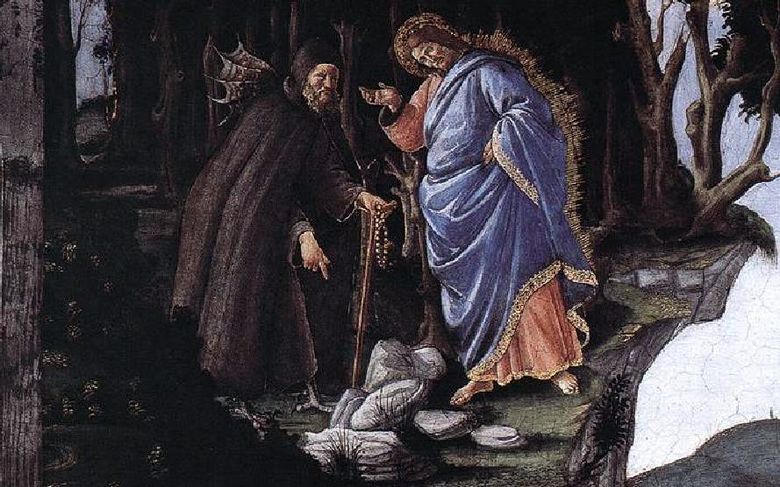 La tentation du Christ – Sandro Botticelli
La tentation du Christ – Sandro Botticelli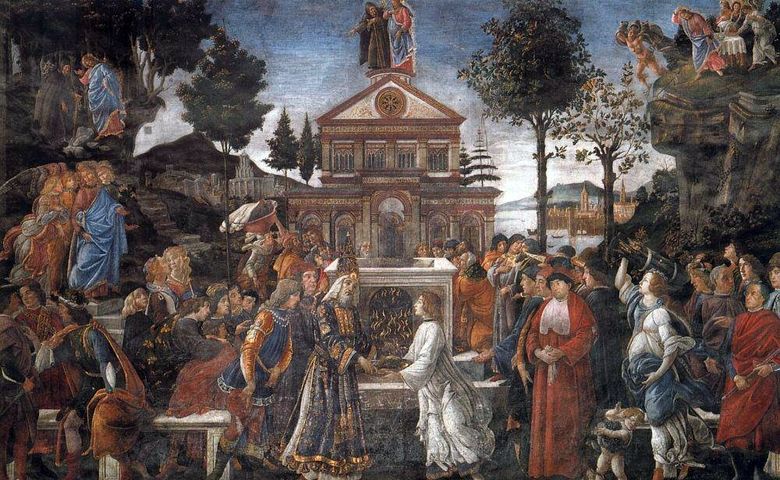 Guérir le lépreux et la tentation du Christ – Sandro Botticelli
Guérir le lépreux et la tentation du Christ – Sandro Botticelli